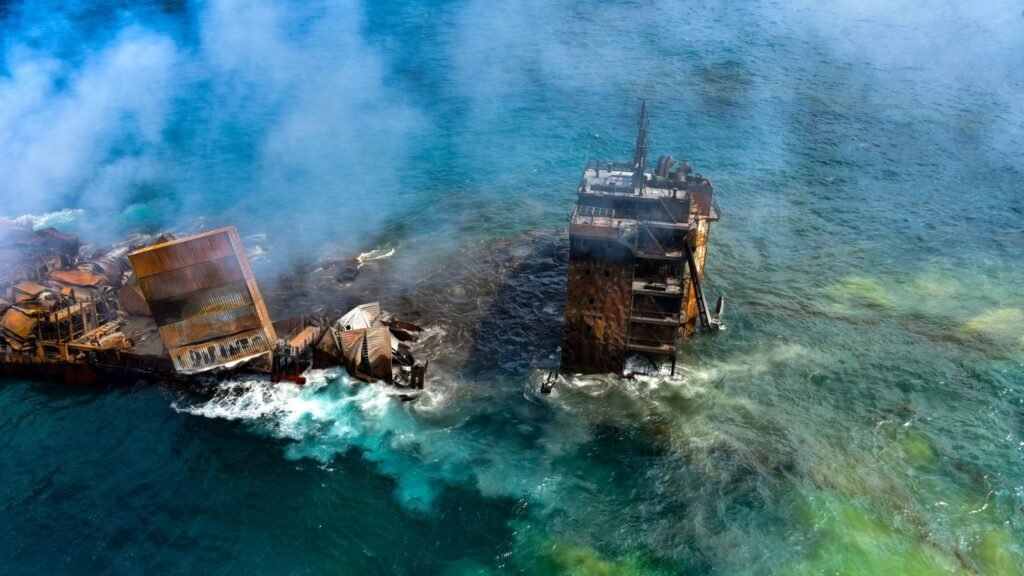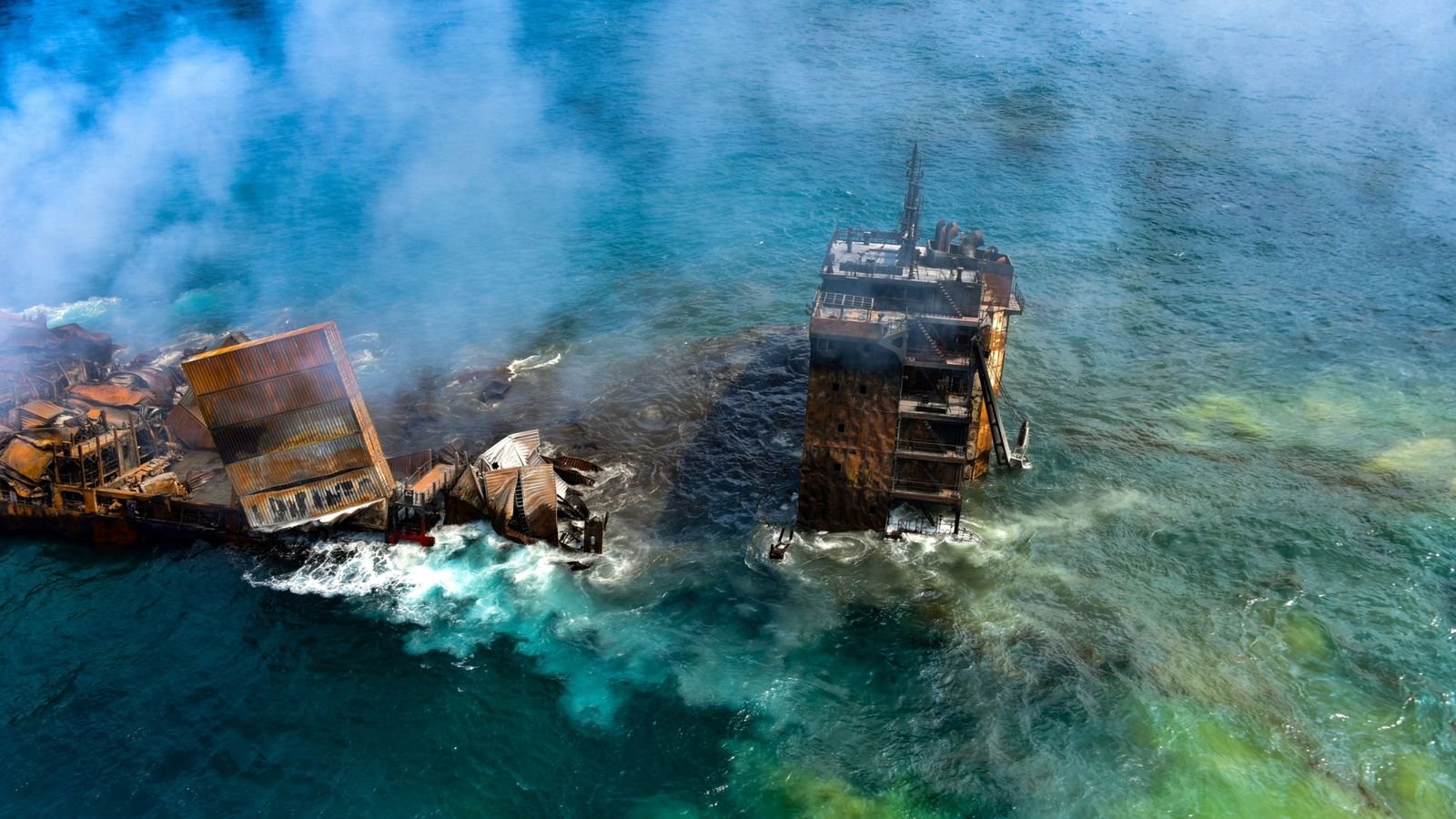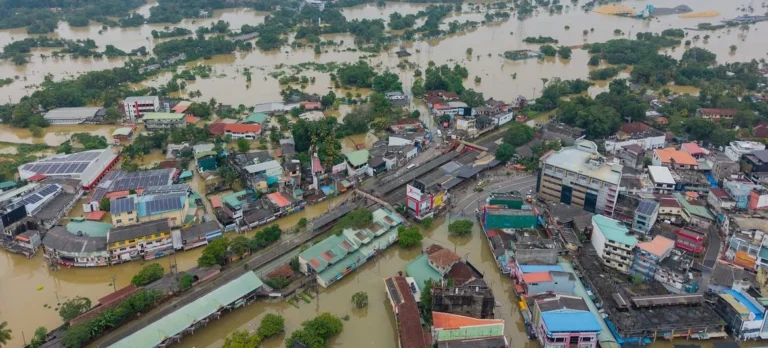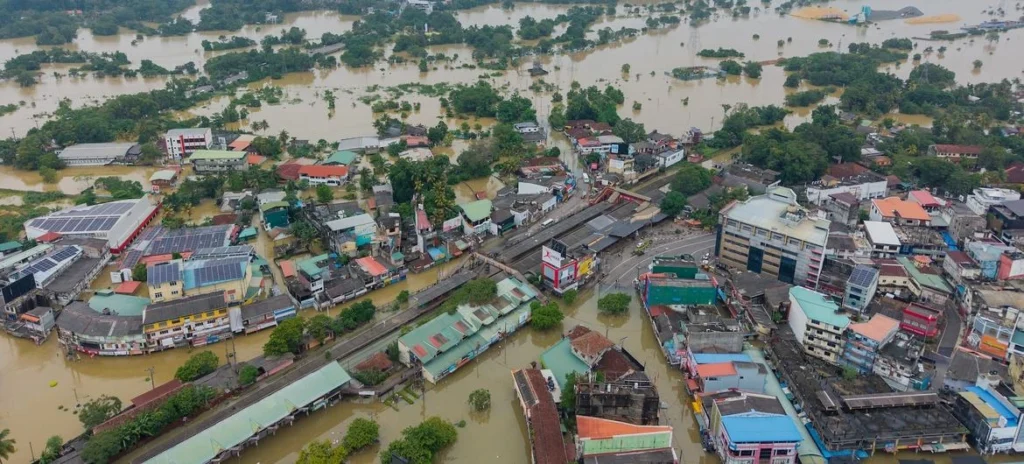In a landmark move that resonates far beyond legal corridors, Sri Lanka’s Supreme Court has ordered a staggering $1 billion in compensation from the parties responsible for the devastating X-Press Pearl maritime disaster. More than a financial settlement, this ruling marks a powerful moment of reckoning—one that speaks to justice, accountability, and environmental recovery in a country still grappling with the long-term consequences of a preventable tragedy.
A Fire That Scarred the Sea
The X-Press Pearl, a Singapore-flagged container ship, caught fire off the coast of Colombo in May 2021 while carrying dangerous chemicals and plastic pellets. Within days, the vessel burned uncontrollably, releasing toxic substances into the surrounding waters and ultimately sinking. What followed was not just an ecological crisis but a moment of national trauma. Plastic nurdles—tiny pellets used to manufacture plastic goods—washed ashore by the billions, suffocating marine life and blackening beaches along the western and southern coasts. The waters turned toxic. Dead sea turtles, dolphins, and fish littered the coastlines. The livelihoods of thousands of fishermen were instantly wiped out.
The damage was immeasurable. The ocean, a life source for so many coastal communities, became a graveyard. For over a year, fishing bans crippled local economies, and Sri Lanka, still reeling from multiple crises, found itself forced to reckon with an unfolding environmental disaster of unprecedented scale.
Justice, Finally Delivered
More than four years after the incident, the Supreme Court’s decision represents a long-awaited step toward justice. The court found that the ship’s owners, operators, and local agents had failed in their duty of care. By hiding critical information about the vessel’s chemical leaks and onboard risks, they not only endangered a sovereign nation’s environment but violated its people’s fundamental rights to safety, health, and livelihood.
The court’s decision did not stop at assigning blame—it took action. It ordered the payment of $1 billion in structured instalments: the first $250 million due within two months, followed by $500 million within six months, and the final $250 million one year from the date of judgment. These funds are not to vanish into bureaucracy. Instead, they will be channelled into a newly formed national fund dedicated to environmental restoration, rehabilitation of affected communities, and long-term marine conservation efforts.
The Fund for Recovery and Restoration
The creation of the “X-Press Pearl Compensation and Environmental Restoration Fund” is a significant development. It goes beyond punitive justice and moves toward reparative action. This isn’t just about paying for damages—it’s about rebuilding what was lost. It’s about reviving ecosystems, restoring the livelihoods of families who depended on the sea, and setting up frameworks to prevent similar disasters in the future.
To ensure transparency and accountability, the fund will be managed by a commission chaired by a retired Supreme Court Justice. This measure is critical in a country where public trust in institutional oversight has often wavered. The move signals intent: that this time, there will be no backroom deals, no buried files, and no forgotten victims.
The Significance of the Ruling
This ruling is not only historic for Sri Lanka—it is a global precedent. By invoking the principle that “the polluter pays,” the court has put multinational shipping companies on notice. No longer can foreign corporations operate in developing nations with impunity, dumping waste and dodging accountability. This decision sends a message that Sri Lanka values its environment, and it is willing to fight for its protection—legally, ethically, and nationally.
Furthermore, the judgment acknowledges the collective suffering of the people. It gives voice to fishermen who watched their income disappear, to children who played on now-toxic beaches, and to communities that lost not just food and income, but a sense of place and purpose.
A Wake-Up Call for Governance
Perhaps the most powerful aspect of the ruling is how it addresses government responsibility. The Supreme Court directly criticised failures by regulatory bodies and named public officials whose negligence enabled the disaster. By holding even those in power accountable, the court has reinforced the importance of public duty, transparency, and enforcement in environmental protection.
This isn’t just about the X-Press Pearl. It’s about setting a new standard for how Sri Lanka handles environmental governance—from port regulations and emergency response, to disaster communication and crisis management.
Turning Tragedy into Transformation
The X-Press Pearl incident could have become another entry in a long list of unpunished environmental crimes in the Global South. Instead, it is being transformed into a catalyst for reform. Sri Lanka now has a chance to reimagine its relationship with the ocean—not just as a resource to be exploited, but as a heritage to be preserved.
With the compensation fund in place, the country can begin long-overdue work in rebuilding coral reefs, cleaning up marine debris, rehabilitating damaged coastlines, and introducing sustainable fisheries management. Scientific monitoring, environmental education, and community-led conservation initiatives must all be part of the recovery roadmap.
But it is not only about restoration. This is a moment to build resilience. The disaster revealed how vulnerable our coastal systems are to global trade and shipping risks. Now is the time to invest in regulatory infrastructure, early warning systems, and international maritime collaboration. The ocean’s health must be a permanent national priority.
Conclusion: A Step Forward, Not the End
The Supreme Court’s ruling is a powerful reminder that justice can be done—and that environmental crimes must be met with accountability, not excuses. While no amount of money can undo the harm caused by the X-Press Pearl, $1 billion is more than symbolic. It is a tool. A mandate. A promise that Sri Lanka will not let its seas be poisoned without a fight.
Now comes the real challenge: implementing this judgment, deploying the funds effectively, and ensuring that justice reaches every community and coastline affected. If that mission succeeds, Sri Lanka won’t just be healing from disaster—it will be leading the region in environmental justice.












